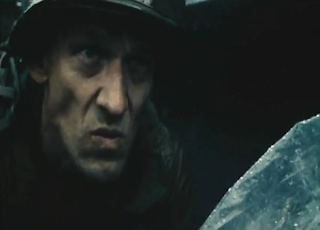The classic Hollywood structure for a film is the “three act structure.” This typical structure seen in almost every film is contrasted by Shakespeare’s tragic structure in which consists of downfall stories. The three act structure conveys triumph stories that rely epic morals and “feel good” sensations. In the three act structure, everyone knows the story will end is a good resolution even with it’s building anticipation. This structure consists of a first, second, and third act - with the climax more towards the end. In the classic Pixar film, Finding Nemo, Pixar relies heavily on the three-act structure. However, despite its rigid appeal to structure, Finding Nemo is still refreshing and stunning. Finding Nemo proves that Hollywood’s typical style can be creative and complex.
In the first act of Finding Nemo the story of Marlin and Nemo is set up. The inciting incident is the event in which literally hooks the audience’s attention. The inciting incident happens at 14’ to 30’ into the film. This occurs when Nemo wanders into deep water and is captured by divers. Within this first act, the audience senses the strain on the father-son relationship – Nemo and Marlin – for Marlin is too overprotective. This first act is the introduction to the film and the rest of the first act Marlin is trying to solve the problem of finding his son. The first act sets up the protagonist – Marlin. The first act also strategically places a plot point into the film – Nemo is captured so how will Marlin save him? The mini climax occurs when Marlin decides to go after his son into the deep blue ocean.
The plot point of the first act is the transition to the next act – act two. This act rises to complications into which is rising action. Over the next hour (30’ to 85’). Marlin, our new protagonist, is caught in a whirlwind of the new surroundings of the new world. Act two escalates the stakes of the film. In this rising action, Marlin must commit to the finding of his son – at this moment he cannot return. While rising action of Marlin and Dory fighting the sea partake, the major plot point two exists when Darla (the dentist’s niece who loves to torment fish) arrives; Nemo is stuck to play dead. However, his father thinks he is dead. This plot point (at 70’) turns the film into hopelessness by thinking Marlin failed. The mini climax takes place when the audience learns that Nemo is not dead and is flushed down the sink. Interesting, however, Marlin in the second act learns to take control of his future. This is a key point of the second act – in which Marlin’s character is building just as the action is building.
The mini climax propels the action into the third act when Nemo escapes. The third act partakes just at the point when it seems all is failed. The climax (at 85’) is the thrilling chase between father and son. Nemo is searching for his dad only to find out that Dory is caught in a fish net. The climax takes on when Marlin learns to trust his son to save Dory. The third act also consists of a resolution (at 92’) – when Marlin is reunited with Nemo for life. This resolution is the “feel good’ moment of the film that makes the three act structure worthwhile.
The three-act structure gives the audience that sense of closure to a film. It gives the audience the peace that although their emotions went through a whirlwind of torment, they have resolution that everything worked out okay. In each act of Finding Nemo, a question was asked, and then answered in the next act. Although Finding Nemo had a fresh new take, Pixar strategically used the three-act structure to capture the attention of audiences for years to come.









